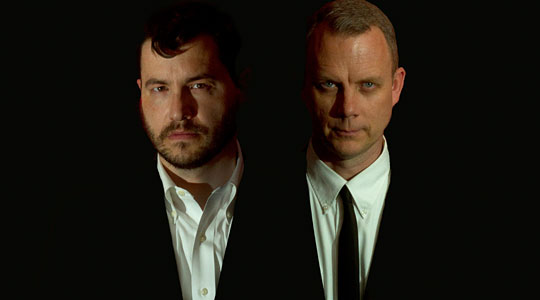Matmos
[US]

M.C. Schmidt and Drew Daniel formed Matmos in San Francisco in the mid 1990s. Marrying the conceptual tactics and noisy textures of object-based musique concrete to a rhythmic matrix rooted in electronic pop music, the duo quickly became known for unusual sound sources.
Sonic materials used by the duo include amplified crayfish nerve tissue, the pages of bibles turning, water hitting copper plates, liposuction surgery, cameras and VCRs, chin implant surgery, contact microphones on human hair, rat cages, helium tanks, a cow uterus, human skulls, laser eye surgery, latex fetish clothing, rhinestones, Polish trains, insects, life support systems, inflatable blankets, rock salt, solid gold coins, a five gallon bucket of oatmeal…. These raw materials are manipulated into surprisingly accessible forms and often supplemented by traditional musical instruments played by the group’s large circle of friends and collaborators. The result is a model of electronic composition as a relational network that connects sources and outcomes together; information about the process of creation activates the listening experience, providing the listener with entry points into sometimes densely allusive, baroque recordings.
Since their debut, Matmos have released over eight albums, including: Quasi-Objects (1998), The West (1998), A Chance to Cut Is A Chance to Cure (2001), The Civil War (2003), The Rose Has Teeth in the Mouth of A Beast (2006) and Supreme Balloon (2008). In 2001 they were asked to collaborate with the Icelandic singer Björk on her Vespertine album, and subsequently embarked on two world tours as part of her band. Most recently they have been part of the ensemble for the Robert Wilson production The Life and Death of Marina Abramovic, featuring Marina Abramovic, Antony and Willem Dafoe.
Currently based in Baltimore, Matmos will release The Marriage of True Minds, an album based on parapsychological experiments, in February 2013.


